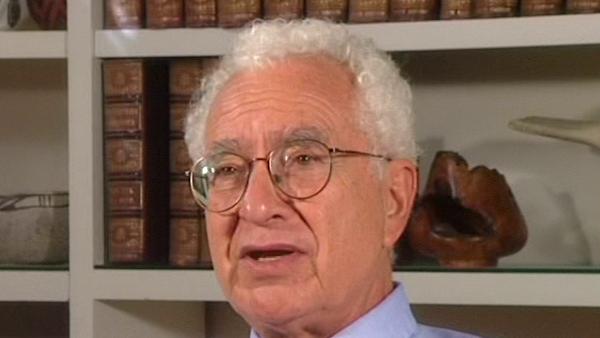NEXT STORY

People at CERN. Veneziano's theory, string theory, bootstrap theory
RELATED STORIES

NEXT STORY

People at CERN. Veneziano's theory, string theory, bootstrap theory
RELATED STORIES


|
Views | Duration | |
|---|---|---|---|
| 141. Giving a paper at SLAC. David Politzer | 737 | 01:35 | |
| 142. The idea of QCD takes hold | 590 | 01:52 | |
| 143. Feynman and QCD | 1727 | 00:56 | |
| 144. Strings and bootstraps. The Veneziano model | 700 | 03:02 | |
| 145. People at CERN. Veneziano's theory, string theory, bootstrap... | 669 | 01:24 | |
| 146. Pierre Ramond, John Schwarz and André Neveu; superstring... | 783 | 01:16 | |
| 147. The importance of superstring theory. Dimensionality | 776 | 03:10 | |
| 148. Getting the Nobel Prize | 3 | 967 | 03:16 |
| 149. Sight-seeing in Stockholm | 855 | 02:39 | |
| 150. Electro weak and charm | 543 | 03:22 |


Strings. Why were Harald and I hesitating between QCD itself and a string... a string-like version of it, which is what we endorsed in the written version of the… of the talk? Well, as I mentioned, at that time hadrons were thought to be the domain in which bootstrap ideas would apply. Now, as I mentioned, I had been a little annoyed that so many people at Berkeley and elsewhere who were doing model bootstrap calculations, were beating to death one or two states, instead of treating crudely a large number of states, say an infinite number of states. And I proposed that, some time or other in the ’60s, that one should really have a bootstrap calculation with an infinite number of meson states, say. Say you leave out the baryons for simplicity, but you would have an infinite number of meson states as colliding particles; you'd have the same infinite set of meson states as exchange particles giving the forces; and you'd have the same set of meson states as bound states coming out. This would be the self-consistent bootstrap idea but applied to an infinite number of meson states, initially taken to be of zero width, then as a result of corrections they would acquire width through their decays into other mesons.
And at Caltech at that time three of our post-docs were David Horn, Christoph Schmidt and Richard Dolen. And Dolen, Horn and Schmidt wrote a paper which referred to, usually referred to as the duality paper, in which they carried this suggestion out much further; talking about how one would carry... how… how one would construct such a bootstrap calculation. Then Veneziano produced his famous Veneziano model... when was that? About ’68? Something like ’68, in which this all happened. It was a zero approximation which you had infinitely narrow states in the S channel, the T channel and U channel, and they were all the same, and there were an infinite number of them. It was beautiful.
[Q] And you had lineally rising trajectories.
Lineally rising Regge trajectories, which was also beautiful. It was a really splendid inspiring model. It had a flaw, however, which was that there was a scalar particle with negative mass squared. That wasn't so good.
New York-born physicist Murray Gell-Mann (1929-2019) was known for his creation of the eightfold way, an ordering system for subatomic particles, comparable to the periodic table. His discovery of the omega-minus particle filled a gap in the system, brought the theory wide acceptance and led to Gell-Mann's winning the Nobel Prize in Physics in 1969.
Title: Strings and bootstraps. The Veneziano model
Listeners: Geoffrey West
Geoffrey West is a Staff Member, Fellow, and Program Manager for High Energy Physics at Los Alamos National Laboratory. He is also a member of The Santa Fe Institute. He is a native of England and was educated at Cambridge University (B.A. 1961). He received his Ph.D. from Stanford University in 1966 followed by post-doctoral appointments at Cornell and Harvard Universities. He returned to Stanford as a faculty member in 1970. He left to build and lead the Theoretical High Energy Physics Group at Los Alamos. He has numerous scientific publications including the editing of three books. His primary interest has been in fundamental questions in Physics, especially those concerning the elementary particles and their interactions. His long-term fascination in general scaling phenomena grew out of his work on scaling in quantum chromodynamics and the unification of all forces of nature. In 1996 this evolved into the highly productive collaboration with James Brown and Brian Enquist on the origin of allometric scaling laws in biology and the development of realistic quantitative models that analyse the influence of size on the structural and functional design of organisms.
Tags: Berkeley, Caltech, Harald Fritzsch, David Horn, Christoph Schmid, Richard Dolen, Gabriele Veneziano
Duration: 3 minutes, 3 seconds
Date story recorded: October 1997
Date story went live: 29 September 2010